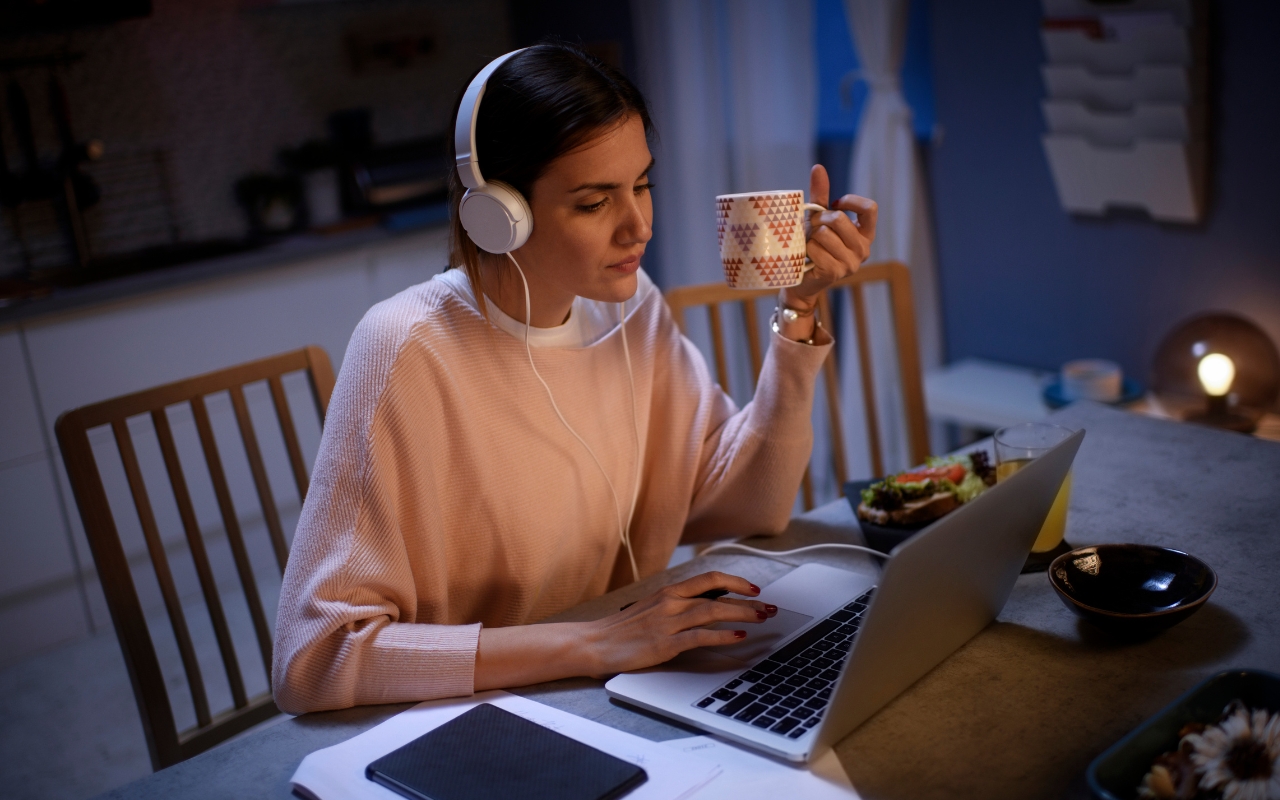Health
How can I stay mentally healthy while working from home?
Published
2 years agoon
By
mbkteam
As the world continues to adapt to the new normal brought about by the COVID-19 pandemic, working from home has become a standard practice for many. While remote work offers several benefits, such as increased flexibility and the elimination of commute times, it also comes with its unique set of challenges. This article aims to provide a comprehensive guide to maintaining a healthy work-life balance while working from home, ensuring both your mental and physical well-being are prioritized.
The shift to working from home has fundamentally altered the conventional boundaries between professional and personal life. Without the physical separation provided by an office environment, many individuals struggle to disconnect from their work, leading to burnout and decreased productivity. However, with the right strategies and mindset, it is possible to create a harmonious balance between work and home life.
One of the most effective ways to achieve this balance is by establishing a dedicated workspace. Designating a specific area in your home solely for work can help create a clear division between professional and personal time. Ideally, this space should be separate from areas associated with relaxation, such as your bedroom or living room. According to the American Health Information Management Association, having a separate workspace with its own door can significantly enhance your ability to mentally detach from work at the end of the day.
Creating a consistent daily routine is another crucial aspect of maintaining work-life balance. The CDC recommends sticking to a regular schedule, including set times for waking up, starting work, taking breaks, and ending the workday. This routine not only helps to organize your day but also ensures that you allocate sufficient time for both work and personal activities. Starting your day with a morning routine similar to the one you had when commuting to an office can set a positive tone for the day. This might include taking a shower, getting dressed in professional attire, and having a healthy breakfast.
Breaks are essential for maintaining productivity and mental health. Scheduling regular intervals for short breaks, as well as a proper lunch break, can prevent burnout and keep you energized throughout the day. During these breaks, it’s beneficial to engage in activities that help you relax and recharge. For instance, going for a walk, playing with your pet, or practicing meditation are excellent ways to give your brain a mini-reset. A Mental Health First Aid USA article emphasizes the importance of taking breaks to increase productivity and reduce feelings of overwhelm.
Hydration and nutrition also play vital roles in maintaining overall well-being while working from home. It’s easy to get engrossed in work and forget to eat or drink enough water throughout the day. Therefore, keeping a water bottle at your desk and scheduling time for healthy meals and snacks is essential. Consuming nutritious foods can improve your mental health and cognitive function, enabling you to perform better at work. Conversely, relying on junk food can lead to energy crashes and decreased productivity.
Disconnection from work at the end of the day is as important as starting the day right. Establishing a clear end-of-day routine can signal to your brain that it’s time to transition from work mode to relaxation mode. This could involve logging off your computer, avoiding work-related emails, and engaging in a relaxing activity like taking a walk or working out. The HealthPartners blog suggests creating an end-of-day routine that helps you unwind and mentally detach from work.
Mental health should always be a priority, especially when the lines between work and home life are blurred. Working from home can sometimes feel isolating, leading to feelings of loneliness and disconnection. To combat this, it’s important to maintain social connections. Virtual interactions with colleagues, friends, and family can provide the social interaction needed to stay mentally healthy. Turning on your camera during virtual meetings can make communication feel more personal, and scheduling regular social calls with loved ones can keep you connected.
Practicing mindfulness is another effective way to manage stress and improve mental health. Mindfulness involves being fully present in the moment and aware of your thoughts and feelings without judgment. Simple practices like meditation, yoga, or even taking a few moments to reflect can help you stay grounded and reduce anxiety. The IBM blog suggests integrating mindfulness into your daily routine to foster mental well-being.
Physical health should not be neglected while working from home. The convenience of home can sometimes lead to a sedentary lifestyle, but finding time for physical activity is crucial. Whether it’s a full workout, a yoga session, or a simple walk around the neighborhood, physical exercise can boost your mood, energy levels, and overall health. Outdoor exercises are particularly beneficial as they provide fresh air and sunlight, both of which are important for physical and mental health.
It's also important to customize your workspace to promote physical health. Using ergonomic furniture, like a stand-up desk, can prevent the physical strain associated with prolonged sitting. Personalizing your workspace with items that bring you joy, such as plants or family photos, can create a more pleasant and motivating environment.
Socializing with coworkers is another aspect that should not be overlooked. In an office setting, casual conversations and interactions happen naturally, fostering a sense of camaraderie and team spirit. In a remote setup, these interactions require more effort. Scheduling virtual coffee breaks or informal team meetings can help recreate the water-cooler effect and strengthen team bonds. These interactions are vital for maintaining a sense of belonging and preventing feelings of isolation.
Additionally, it’s important to take advantage of any mental health resources provided by your employer. Many companies offer Employee Assistance Programs (EAPs) that include counseling services, stress management workshops, and other resources aimed at supporting employees’ mental health. Utilizing these resources can provide valuable support and strategies for managing stress and maintaining mental health.
Finally, it’s essential to be kind to yourself and recognize that it’s okay to not always be productive. The unprecedented changes brought about by the pandemic have affected everyone differently, and it’s important to practice self-compassion. Allow yourself to rest and take breaks when needed, and don’t hesitate to seek help if you’re struggling. There are numerous organizations and resources available to support mental health, and reaching out for help is a sign of strength, not weakness.
Working from home has transformed the way we approach our professional and personal lives. By implementing these strategies, you can create a healthier work-life balance and ensure that your mental and physical well-being are prioritized. Remember, finding the right balance is a continuous process that requires self-awareness and flexibility. With the right approach, you can make working from home a rewarding and fulfilling experience.
For further reading and resources on this topic, you can visit HealthPartners, Mental Health First Aid USA, and IBM.
By following these guidelines and continuously adapting to your needs, you can create a work-from-home environment that supports your overall well-being and helps you thrive both professionally and personally.













